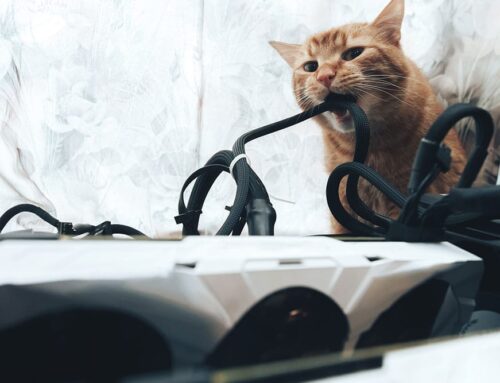Medicating a cat, much like trimming their nails, can be a challenging task for feline owners, but it can be done. Cats are often resistant to taking medication (or doing anything they don’t want to do), even when it’s necessary for their health and well-being. However, our team at Just Cats Clinic has some tips and techniques to make the process as smooth and stress-free as possible—for you and your cat.
1. Discuss the medications with your veterinarian
Before administering any medication to your cat, consult your veterinary team. Your veterinarian will prescribe the appropriate medication and dosage based on your cat’s specific condition and health history, as well as offer advice on techniques for administering the medication.
2. Choose the right medication
Various forms of medication are available for cats, including pills, liquids, and topical treatments. When possible, opt for medications in the form your cat is most comfortable with. Often, this means liquid or soluble forms that can be disguised in food. Some medications can also be compounded into flavored formulations to make them more palatable. Ask our team if this is a possibility for your feline friend’s medication if you know your cat is likely to be uncooperative.
3. Create a calm environment
Cats are prone to anxiety when anything in their environment or routine changes, so it’s important to create a serene, comfortable space before administering any medication. Choose a quiet and familiar place away from loud noises and other distractions. Use soft bedding or a towel to gently restrain your cat if necessary, but avoid using excessive force, as this can amplify their stress and resistance. You can also ask for assistance from a friend or family member to make the process easier.
4. Use pill pockets and other treats as a disguise
Pill pockets are soft, malleable treats used to conceal pills or capsules. Simply place the pill inside the pocket and offer it to your cat as a treat. Alternatively, you can hide the medication in a small amount of wet food or a favorite treat to encourage your cat to consume it. Ensure you follow your veterinarian’s instructions because certain medications cannot be crushed or taken with food.
5. Administering liquid medications
Liquid medications are administered using a syringe or dropper. Gently restrain your cat and tilt their head back slightly. Insert the syringe or dropper into the side of your cat’s mouth, behind the canine teeth, and slowly dispense the medication. Be careful not to administer it too quickly, since this can cause choking or gagging.
6. Be patient, soothing, and persistent
Medicating a cat may require patience (lots of it) and persistence, especially if your cat is resistant or difficult to handle. Here are a few reminders on how to keep them calm:
- Take breaks when your cat is fearful or anxious, waiting for a time when they are more relaxed.
- Give your cat plenty of treats and verbal praise.
- Ensure they are cozy and in an area of the home where they typically hang out.
- Remain calm and use a soft, reassuring voice, since our pets pick up on our feelings and can respond positively or negatively based on this.
If your cat continues to refuse medication, consult your veterinarian for alternative solutions or techniques.
7. Follow up on any medication questions or veterinary visits

Observe your cat’s condition closely for any changes in the medical issue being treated. Make follow-up veterinary appointments as directed to ensure the medication is effective and to give your veterinarian the opportunity to make any necessary adjustments. This is also the time to ask any questions about the medication, side effects, and your pet’s progress.
Giving your sweet cat their medication can be a struggle, but with patience, persistence, the right techniques, and plenty of loving attention, it is possible. With guidance from our team at Just Cats Clinic, you can create a positive association for your pet when it’s necessary to give them medication. Give us a call for an appointment or for additional information on stress-free ways to give your cat their meds.













